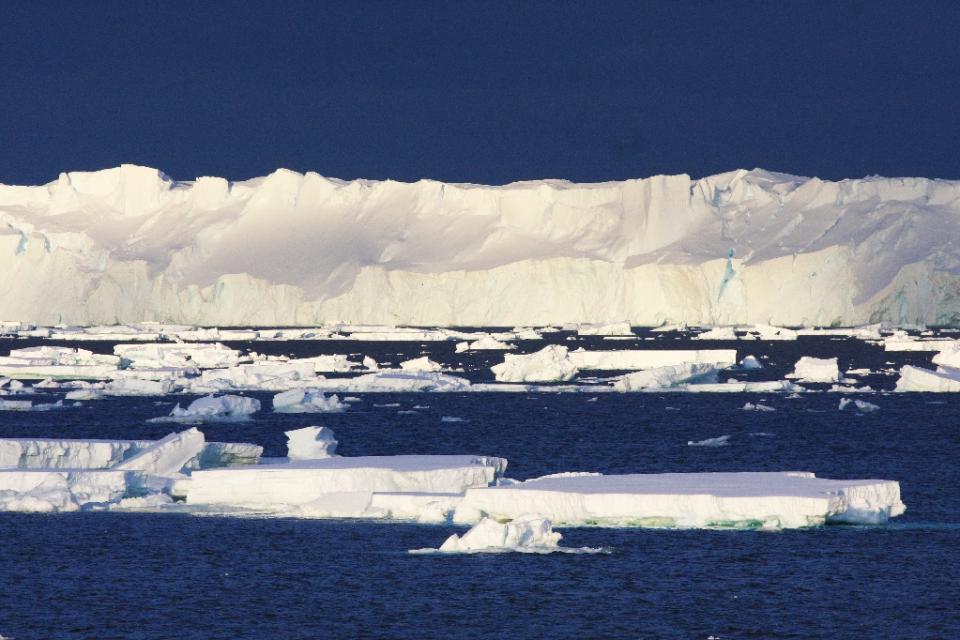Although the poster is no longer around, this is a general discussion - in case of new people becoming distracted or confused by the confidence with which this silliness
was posted, a reply seems in order:
1) a. tidal fluctuations were not in fact the cause of the breakups of the several plugs, or barrier ice formations, that we have been losing or have lost around Antarctica and Greenland. The glaciers formerly slowed are speeding up, which adds to the sea ice volume while it subtracts from the land ice volume.
1) b. rising sea levels from a warming ocean increase the effect of shoreline tidal fluctuations on everything affected by them. Even small rises often have amplified effects, and the rises are no longer all that small. So tidal fluctuations do not replace, but rather augment and amplify, the effects of global warming.
1) c. The increasing flow of breakup ice, landbased glacial ice, and meltwater, into the ocean floats a layer of very cold (therefore lighter) fresher (therefore lighter) water on top of the globally warming ocean that abetted the ice loss. That affects many things, including the calculations of net global temperature, weather local and distant, and ecological circumstances, in ways some climate deniers appear to find confusing.
2) What the IPCC has "admitted" is what the data show for everybody to see - a recent slowdown (not a stoppage even, much less a reversal) in what was for a while a startlingly rapid rise in planetary atmospheric temperatures. You asserted that global warming (land, sea, and air) has stopped for 18 years, which is not what the data show and not what the IPCC has "admitted".
3) The long term melting of the glaciers in North America is not the "current global warming". You said it was. That was silly.
Sea ice sheets break off when their thickness can not support their size in a fluctuating ocean, you do know that oceans are always moving.
CO2 has been rising steadily, and the IPCC has admitted what they call a stall in global warming during this period, feel free to Google it.
20,000 years ago, there was an ice sheet down to NJ in North America, this has been melting for 20,000 years.
was posted, a reply seems in order:
1) a. tidal fluctuations were not in fact the cause of the breakups of the several plugs, or barrier ice formations, that we have been losing or have lost around Antarctica and Greenland. The glaciers formerly slowed are speeding up, which adds to the sea ice volume while it subtracts from the land ice volume.
1) b. rising sea levels from a warming ocean increase the effect of shoreline tidal fluctuations on everything affected by them. Even small rises often have amplified effects, and the rises are no longer all that small. So tidal fluctuations do not replace, but rather augment and amplify, the effects of global warming.
1) c. The increasing flow of breakup ice, landbased glacial ice, and meltwater, into the ocean floats a layer of very cold (therefore lighter) fresher (therefore lighter) water on top of the globally warming ocean that abetted the ice loss. That affects many things, including the calculations of net global temperature, weather local and distant, and ecological circumstances, in ways some climate deniers appear to find confusing.
2) What the IPCC has "admitted" is what the data show for everybody to see - a recent slowdown (not a stoppage even, much less a reversal) in what was for a while a startlingly rapid rise in planetary atmospheric temperatures. You asserted that global warming (land, sea, and air) has stopped for 18 years, which is not what the data show and not what the IPCC has "admitted".
3) The long term melting of the glaciers in North America is not the "current global warming". You said it was. That was silly.
Last edited:








